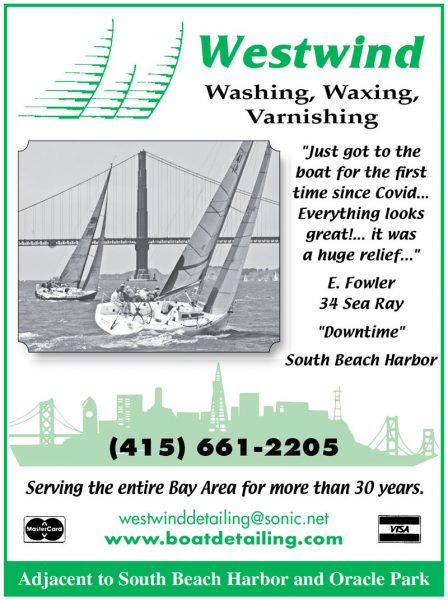
Ryan Foland Can Explain Everything
In the March issue of Latitude 38 Mitchell Andrus told us about Ryan Foland’s engine project on his Cal 34-lll Bingo 2, which hails from Huntington Harbor. Ryan’s become a real, hands-on owner, pulling apart the engine and putting it back together, which is why he knows so much and can explain everything. Even the photo below.
We sent Ryan a link to the story and asked if his engine was now purring along. He replied, “She sure is. Well, after I had to figure out how to replace the impeller when no water was coming out. But I did it. And just in time for a romantic Valentine’s Day harbor cruise on which we actually hit a shoal, and got stuck! And BoatUS couldn’t get us unstuck, so we had to wait four hours for the tide to pop her out. Hahhhaa! I swear, it is always something. But it is a Valentine’s Day neither of us will forget. There was even a drone capturing the footage, and someone forwarded me the video. Here is a screenshot.”
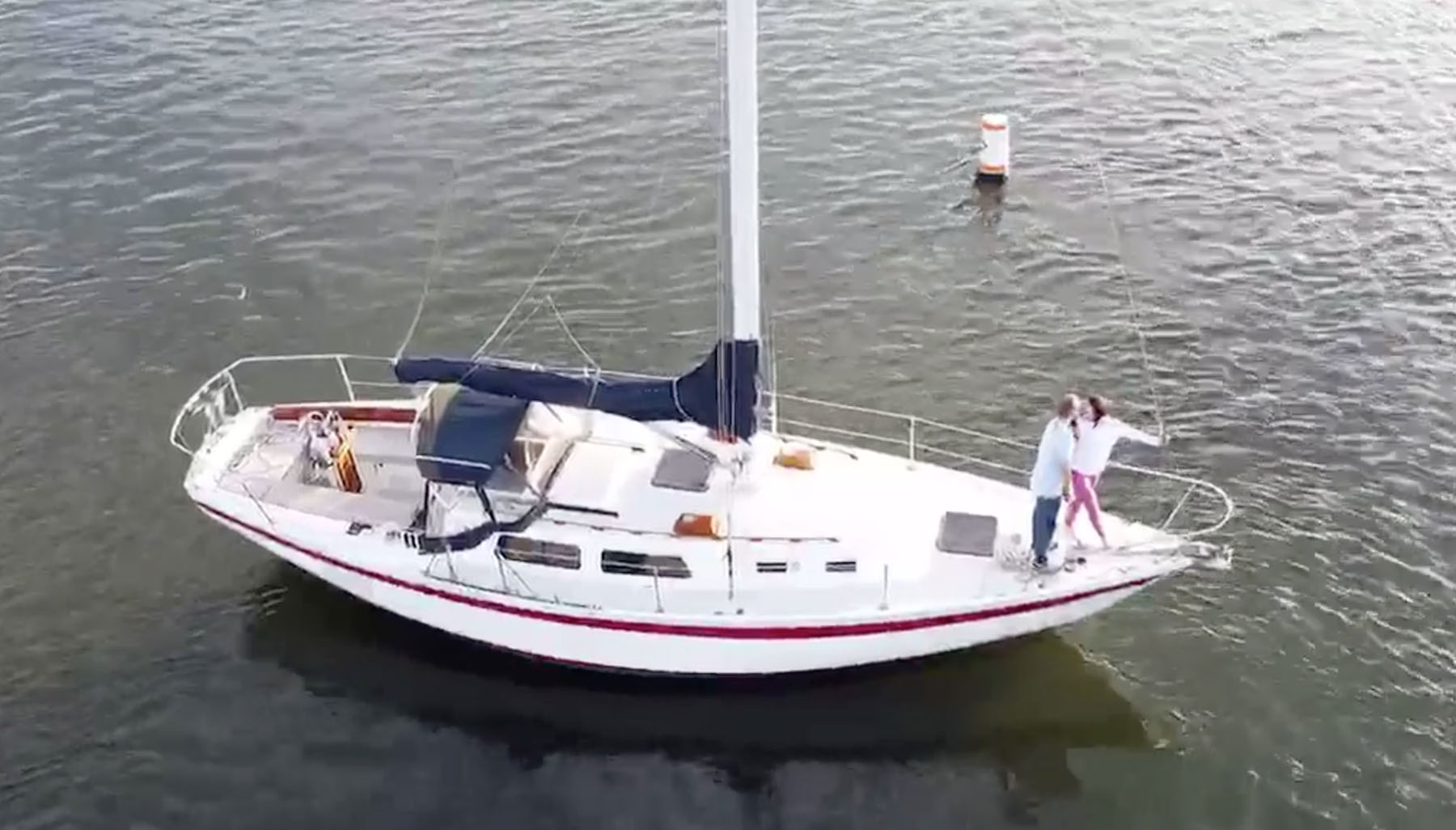
So how does he explain that? “I was making a wide turn around a derelict boat that was swerving, I followed a Duffy around this buoy, and when I did, I looked at it, and it said ‘SHOAL,’ and I was like, ‘Wait, that says shoal, that means …’ and that is when we came to a soft halt as our keel kissed the muddy floor.” As the saying goes, “There are three types of sailors: those who have run aground, those who will run aground, and liars.”
Ryan notes, “At least the boat looks good. And true romance is when things go wrong, and it’s all good!”
Sausalito City Council Opens Door for Housing in the Marinship
In mid-February, the Sausalito City Council unanimously passed its General Plan update, which will serve as the city’s blueprint for growth for the next 20 years. Included in the General Plan, which was the result of a separate 3-2 vote by the city council, is “language on a citywide zoning overlay” that could potentially open the door to housing in the Marinship, Sausalito’s historic working waterfront.
As we’ve reported, the Marinship is an economic powerhouse — generating some 46% of Sausalito’s business property taxes — that sits on a sliver of land hastily developed during World War II and now plagued by toxic soil and flooding, among other problems.
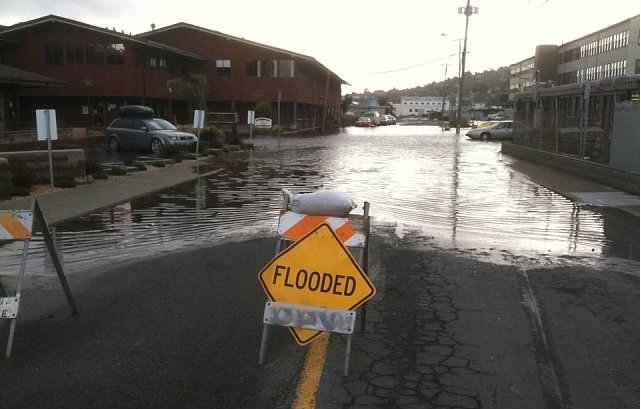
“I don’t want to tell people this is a dandy place to raise your kids if it’s going to flood and it’s toxic and all of a sudden somebody decides to put affordable housing on there,” Sausalito mayor Jill Hoffman was quoted as saying by the Marin Independent Journal.
In a Marin Post article, Bob Silvestri said that the new General Plan does not specifically address toxins, sea-level rise, etc., but does suggest that more studies should investigate these issues. “In fact, the city already has numerous studies, going back over 30 years, all of which come to the same conclusion: Remediation and repair needs to be done now and on an area-wide basis, because the environmental hazard impacts are far too comprehensive and expensive to be addressed on a project-by- project basis,” Silvestri wrote.
“But again, all this fell on deaf ears,” he added.
Former Sausalito mayor and current city councilperson Susan Cleveland-Knowles — who was among the three councilmembers who voted for the “housing overlay” — cited “a growing senior population and discriminatory housing restrictions against Black families after World War II, which has led to a ‘shocking lack of diversity’ as reasons to open up the possibility of housing citywide,” according to the Journal. “I would love to turn the corner on that policy in Sausalito and start to open up more housing opportunities for our families of Marinship workers and other workers, including our maritime workers, our essential workers, to make this a more equitable community.”
(New city councilperson Ian Sobieski beat incumbent Joan Cox — who was against new land-based housing in the Marinship — by a single vote back in November 2020. Sobieski was also among the three voting for the housing overlay. We think it’s more than fair to assume that if Cox were still on the city council, the overlay would have been struck down.)
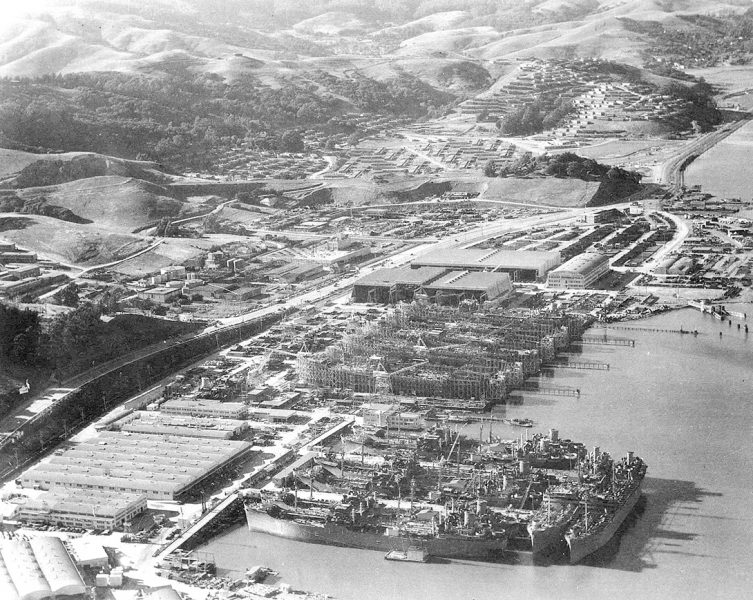
Vice mayor Janelle Kellman, who was recently elected to Sausalito’s city council, told the Journal that environmental justice and racial justice are intertwined, and that she is not comfortable putting underserved populations in the city’s most problematic area without further review. “We should not use racial justice as a reason to potentially put affordable housing in an area that is known to be contaminated and flooding and sinking when we know we have something coming up, the housing process, that will allow us to give this the due diligence it really requires,” Kellman said.
Silvestri echoed that concern. “Councilmember Cleveland-Knowles’ way of governing ensures that the negative consequences of existing environmental hazards in the Marinship will inevitably fall on the backs of the poorest and most disenfranchised among us. They are the ones who would suffer the most from the City’s decades-old refusal to address the Marinship’s existential, environmental hazards.”
Despite near-universal praise for Sausalito’s working waterfront, actually doing business in the Marinship remains a difficult proposition. Silvestri noted that “while the new General Plan is filled with verbiage about supporting the existing maritime/industrial/artisan community in the Marinship, today, dozens of essential maritime and industrial businesses are forced to operate under adhesive month to month leases, precluding them from daring to complain about hazards or grow their businesses in place or make much-needed, long-term investments in their facilities.”
Westwind Boat Detailing Offers Washing, Waxing and Varnishing
Welcoming Contributions from the Crew
Latitude 38 has covered the world of sailing through the eyes of the West Coast sailor since 1977. That’s been possible with the support of advertisers and many contributions of stories and photos from San Francisco Bay, Southern California, Mexico and wherever in the world West Coast sailors roam.
We continue to appreciate all the businesses, clubs, readers and writers who support Latitude 38 and help our sailing community continue to thrive. As the world evolves, we’re reaching out for your continued support with a request, for those who are able, to make a financial contribution by chipping in a few bucks one time or monthly. To contribute, click here.
Of course, you can contribute stories of sailing in California or from anywhere on the watery planet Earth. You can also contribute by supporting our fantastic advertisers, running an ad, subscribing, or buying a T-shirt.
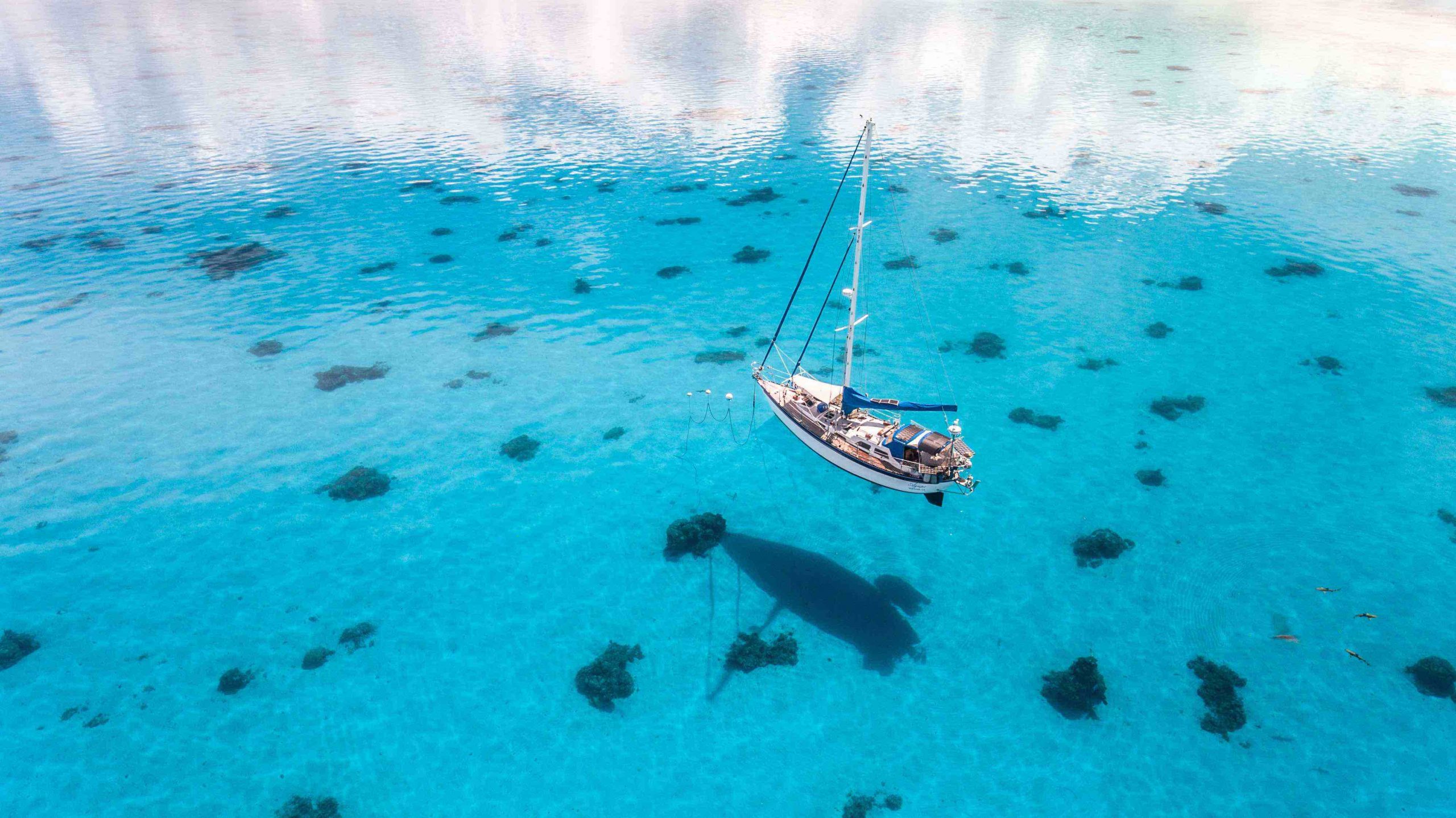
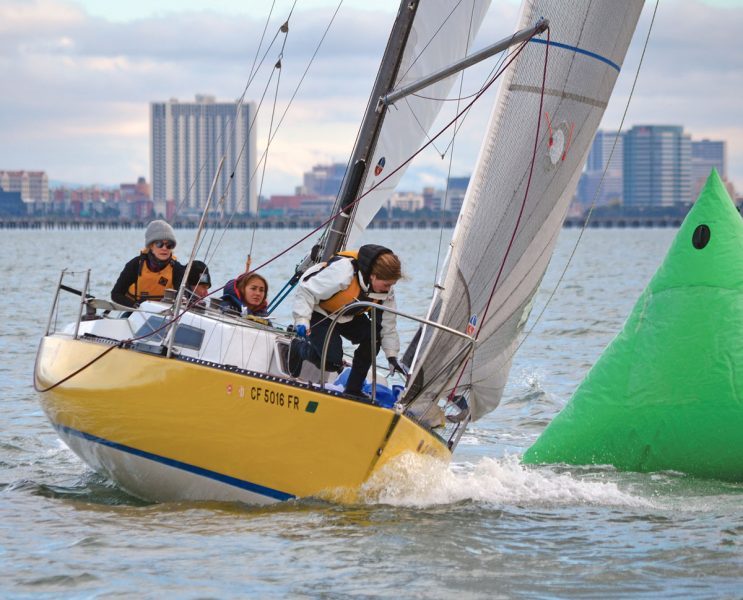
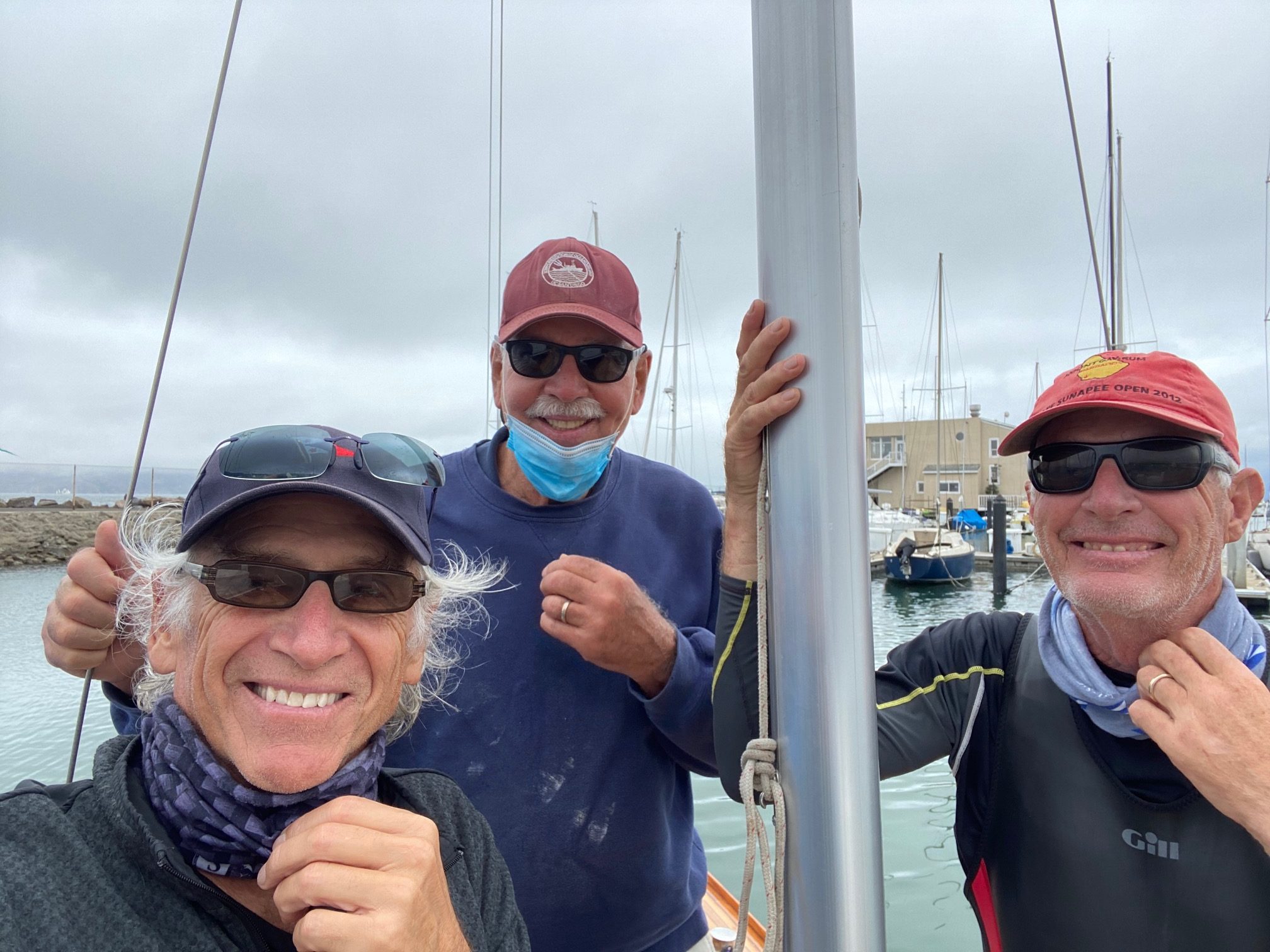
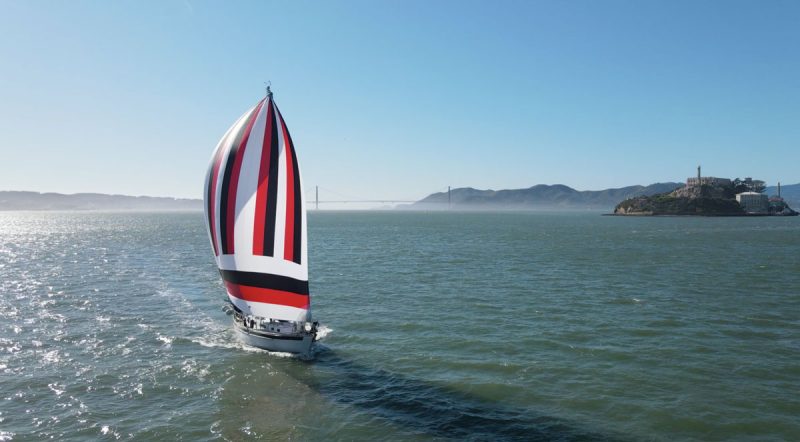
Summer is coming, and the sailing only getting better. Thanks for reading and keeping in touch. We look forward to seeing you on the water. Contribute here and send stories and photos to [email protected].
America’s Cup Delayed but Will Start on Tuesday
The postponement flag on the America’s Cup has finally been lowered. The highly anticipated Race 1 of the 36th America’s Cup Match between Emirates Team New Zealand and Luna Rossa Prada Pirelli will begin at 7 p.m. PST on Tuesday, March 9, as Auckland will drop to COVID Level 2 while the rest of New Zealand will remain on Level 1. The expectation is that the New Zealand government will announce a drop to Level 1 for Auckland next week so that fans can return to the America’s Cup Park, as well as to downtown restaurants and bars.
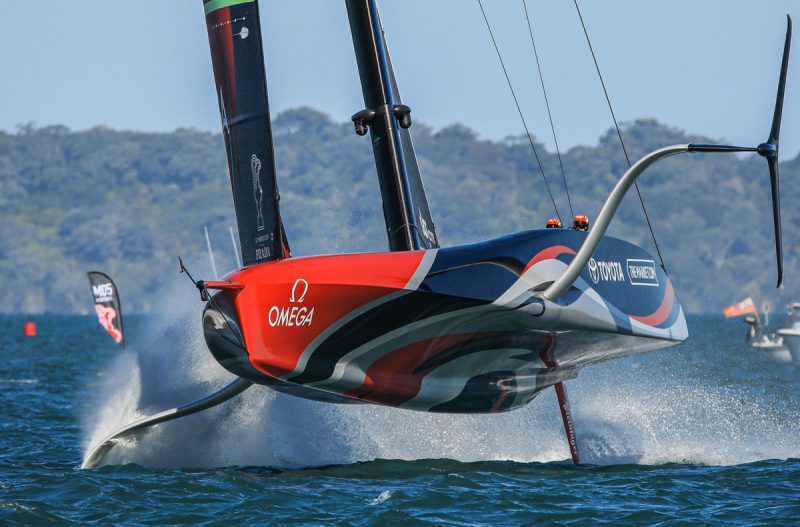
You can find the American broadcast on NBC and NBC Sports. The subscription price for NBC Gold has now dropped to $129 if you prefer that option.
Adding a few extra days to the three and a half years we already have had to endure only adds fuel to the fire. We’re finally going to have the much-anticipated rematch between helmsmen Jimmy Spithill and Peter Burling. Storm systems and recent earthquakes infused with tsunami threats thankfully have passed and the proverbial coast is clear, we hope.
The race schedule will include two races per day, resuming on our calendar (California) on Thursday, March 11, with racing every day thereafter until one of the teams reaches seven wins.
“We have been waiting and watching each of the Challengers,” said ETNZ’s Burling. “We finally know who we will be racing and who we need to beat to successfully defend the America’s Cup. We’ve always known Luna Rossa will be passionate, creative. Our utter focus is now zeroed in, knowing that we need to be better than them across the board. A few of their guys were teammates last time, so we know them well and they know us.”
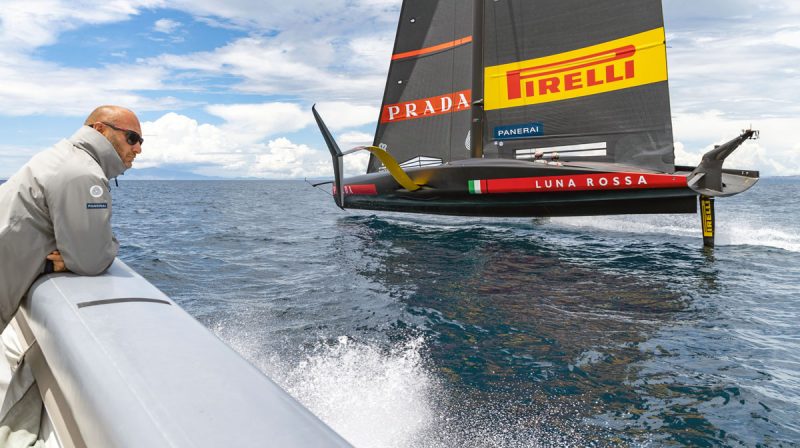
Many of the so-called ‘experts’ are calling for a lopsided affair, graciously giving Luna Rossa a win or two as a courtesy. They may be right, but I am a little more optimistic that the event could be much closer than anticipated. It looks as if it may be a light-winds start of the Match, which may favor the Italians. We’ll see.
There are certainly subtle differences in the hull and foil shapes of the teams’ AC75s. Both boats have now been measured, and their racing certificates are locked and loaded for the Match. In 2013, Oracle Team USA changed their certificate from race to race. The Kiwis have closed that loophole this time around.
Te Retuhai is certainly a bit more radical, with a very full-bodied and shapely hull. The wings at the leading edge of the foil arms are razor-thin and have less of an anhedral angle than the Italians’ foils on Luna Rossa, which has more pronounced bulbs attached to their wings for more stability.
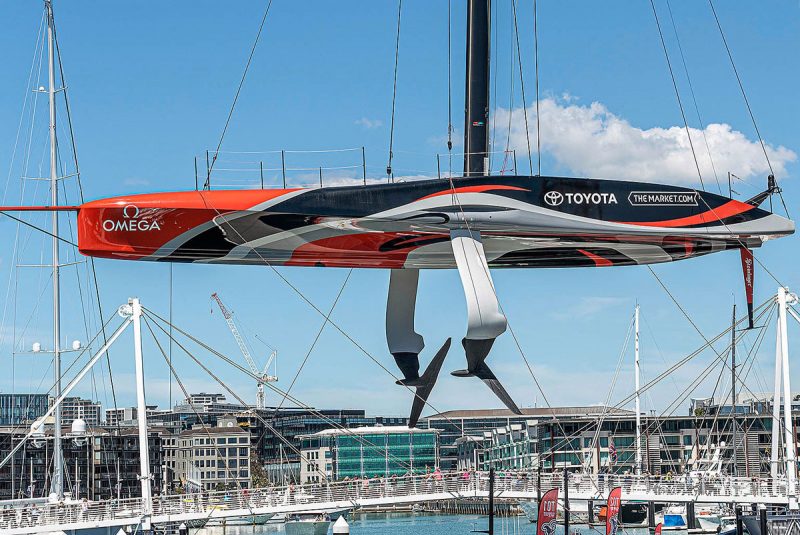
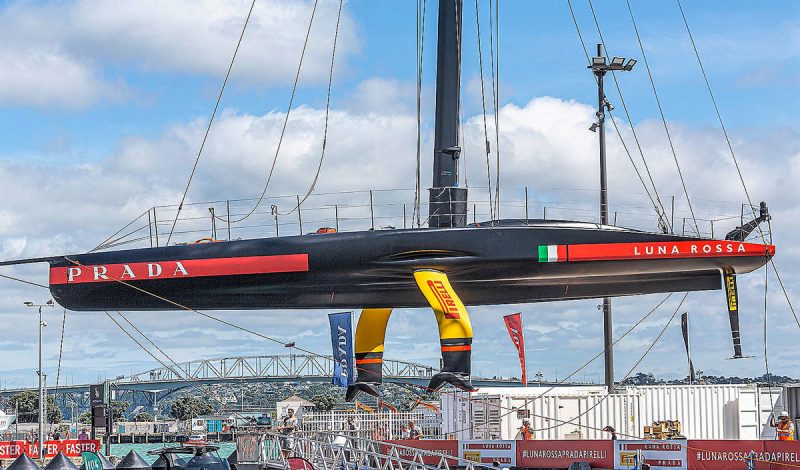
But the tempest in the teapot may be in the sails. Both teams have systems and shapes that generate more power than their recently vanquished predecessors’. The Italians have buried their boom beneath the deck, which may help to control the clew of the mainsail, while also sealing it tighter at the bottom end than the Kiwis’, allowing it to generate more power.
ETNZ has resurrected the dormant code zero sail. It will be interesting if the ‘Dodo’ sail actually makes an appearance, but if the winds are spotty we may get a repeat of the America’s Cup World Series, when the team that was able to pop up onto their foils and connect the dots prevailed.
The revenge factor really only plays to the press and the fans, having little effect on racing. The pre-starts and starts are going to be intensely thrilling and will go a long way to determine who has control of the racecourse. We know that Spithill is a “pit bull” in the box, but Burling had his number in Bermuda. So, it’s all on!
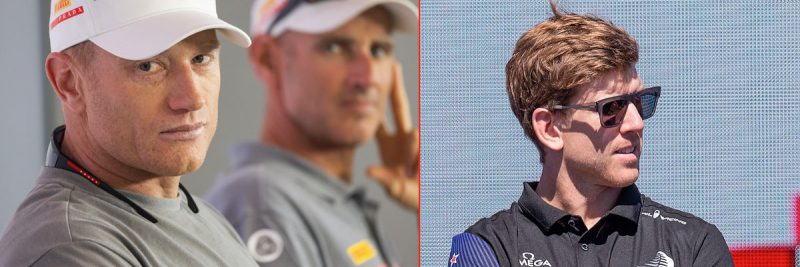
Comparisons are always difficult to make. In Bermuda aboard the AC50 foiling cats, the reaching starts and downwind second legs delivered a drag race in straight-line speed, whereas on the Waitemata Bay or Hauraki Gulf racecourses we have a return to traditional upwind starts and more conventional match-racing tactics, albeit at speeds that have more in common with Formula 1 racers than radical foiling monohulls.
Spithill and Francesco Bruni as co-helmsmen have now got their communications straight. They were ruthless in dismantling the British, with tactician Pietro Sibello calling the course. It’s been whispered that the Kiwis have replicated the unique approach, with skipper Glenn Ashby sharing the wheel and Burling’s ‘wingman’ Blair Tuke on tactics.
Never underestimate the Kiwis. They have been innovative, and many times dominant, since arriving on the scene in 1986 with a ‘plastic’ boat and capturing the America’s Cup last time with cycle grinders and an ‘X-Box’ remotely controlled wingsail that led to their dominance in Bermuda, and many sleepless nights for Spithill. He hasn’t forgotten!
So, what do I think? I think the America’s Cup will remain in New Zealand, with the Italians capturing a couple of races. What do I hope? I think the Auld Mug is better served in Europe. Miracles do happen! Just ask Spithill.
Captain of Runaway Vessel ‘GO’ Explains the Crash
Last Friday we brought you footage of the motor yacht GO driving into the docks at St. Maarten. Today we bring you an update. According to the a report in the island’s local newspaper, The Daily Herald, the incident was caused by a computer malfunction that locked the vessel into gear, leading its captain, Simon Johnson, to choose “a deliberate impact with the St. Maarten Yacht Club wooden dock.”
Captain Johnson has driven GO 28,000 miles during his three and a half years with the vessel, and wanted to “set the record straight.” He described the moments that led to the crash and said the vessel started to malfunction just before they were to pass through the arterial road bridge: “There was nothing I seemed to be able to do; all the controls on the bridge were showing normal. I called the engine room and everything was normal down there.”
The Herald states that GO is “the widest yacht to date to come through the bridge with just 50 centimetres [approximately 19″] of space on each side left to pass.”
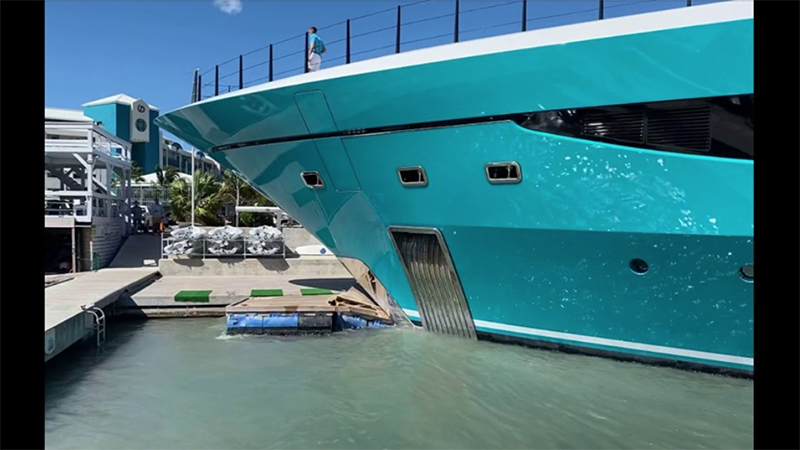
“I found I had extremely limited control, almost limited to only the bow thruster, but with now only 50 metres between us and the bridge I had to make a decision fast,” Captain Johnson added.
At this stage GO remains at the dock while waiting for the final assessments and repairs to be completed.
You can read the full story here.

